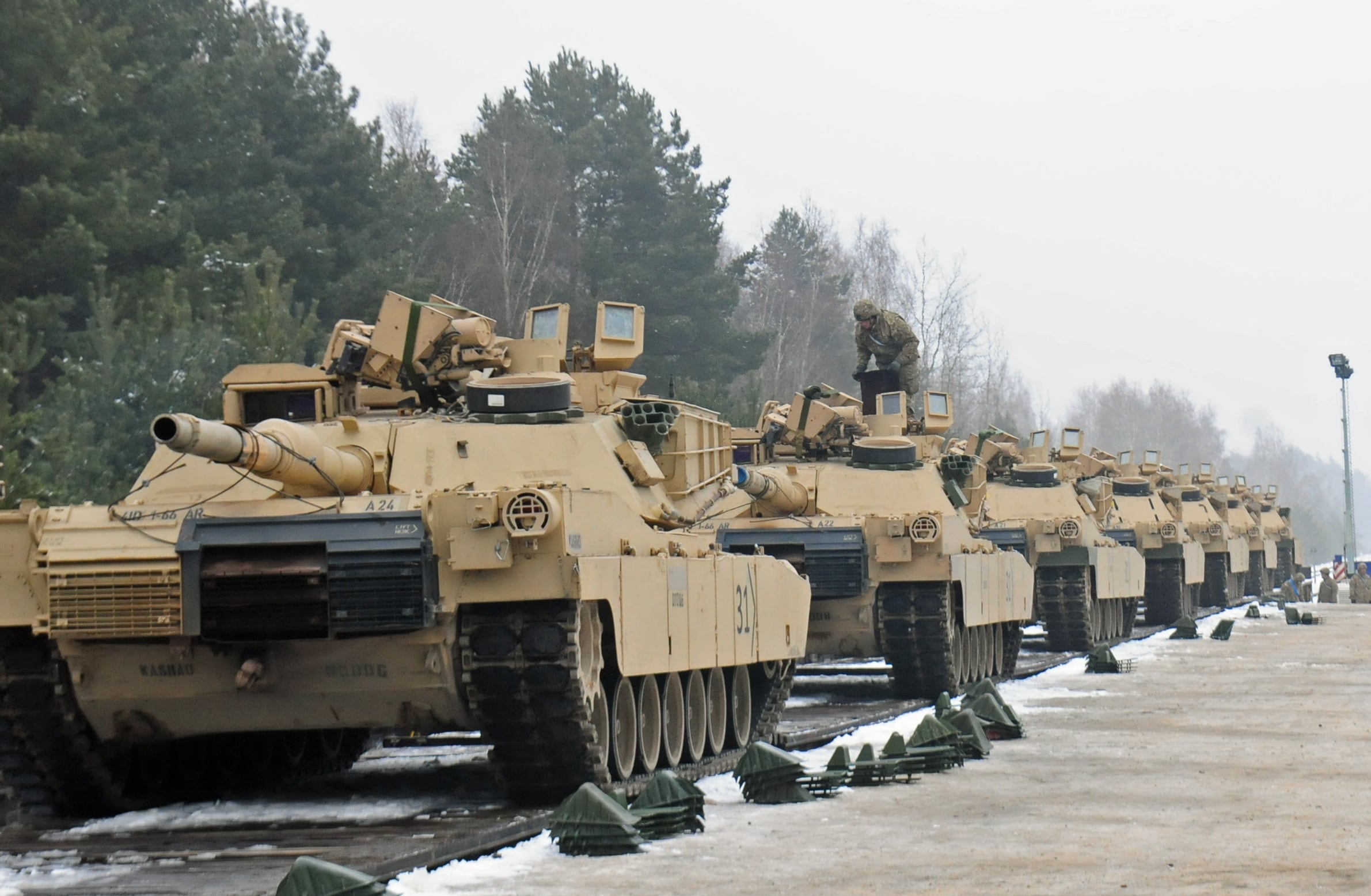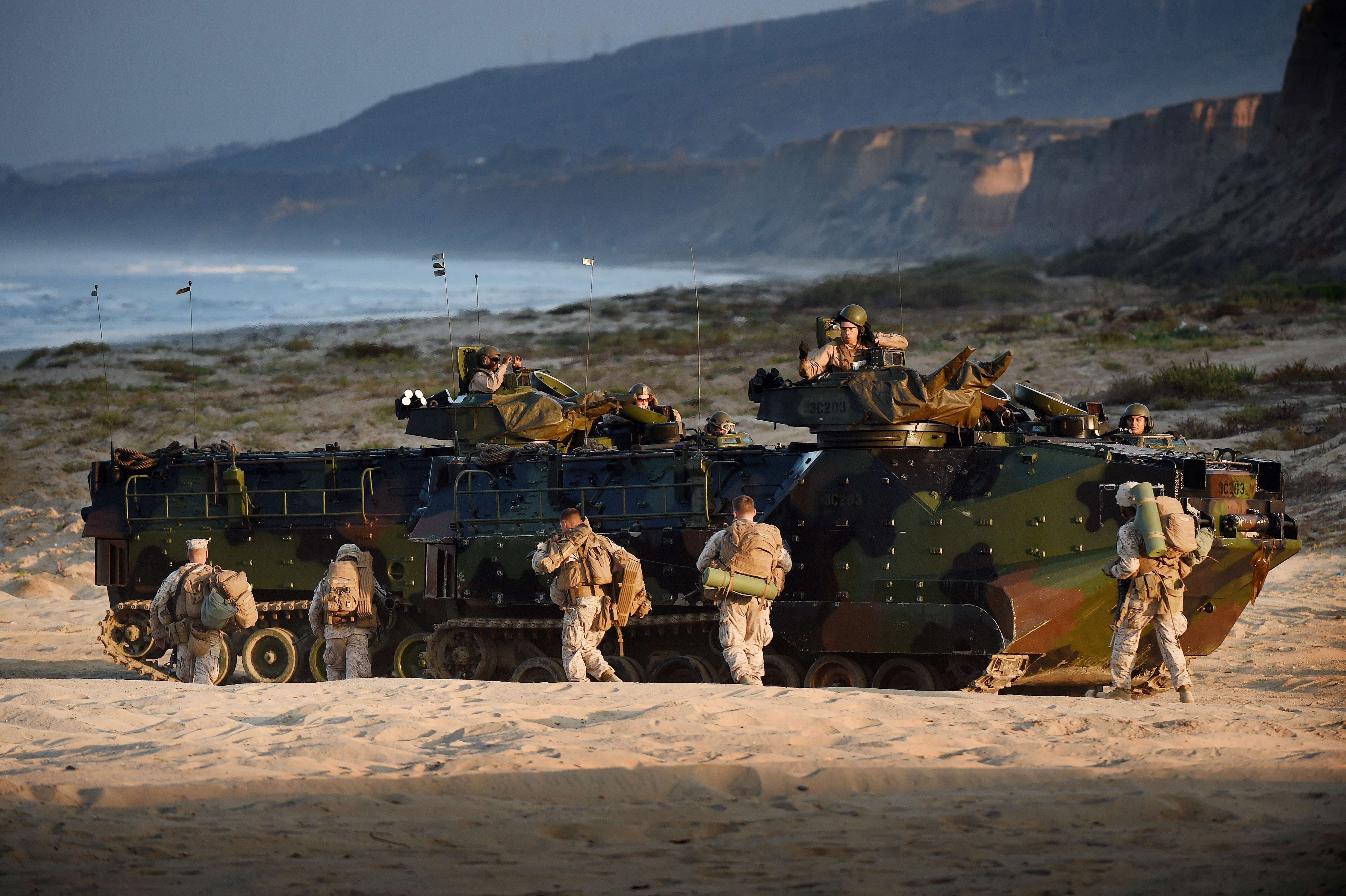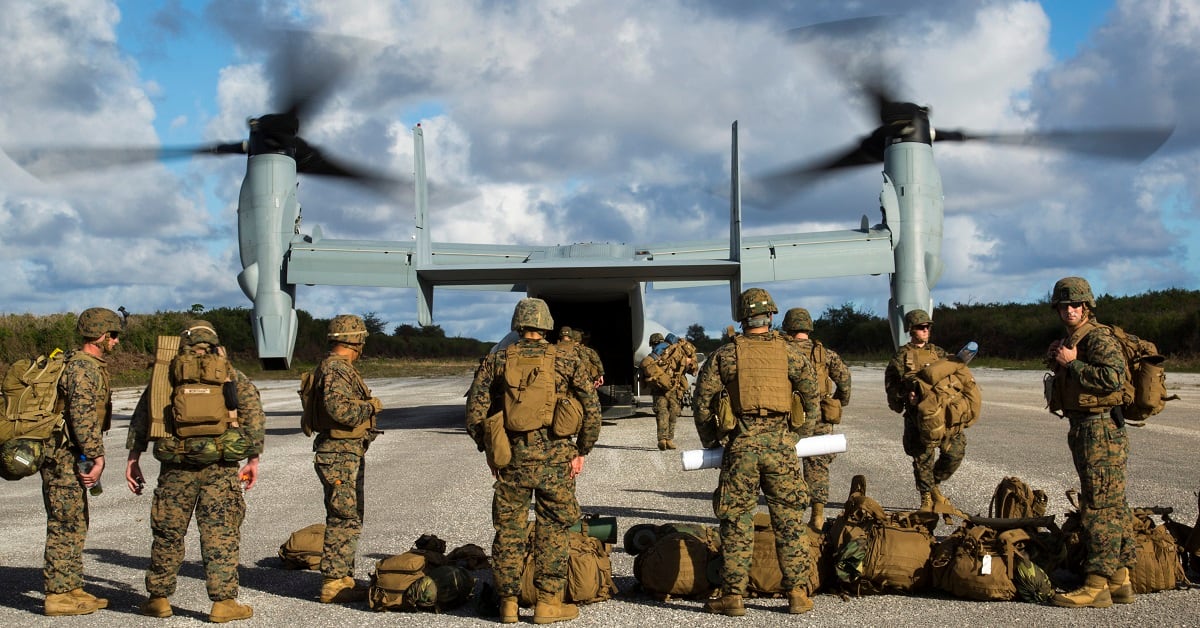HONOLULU — The days of U.S. troops concentrated in hubs like South Korea and Japan are about to be on the wane, as the Defense Department’s Indo-Pacific Command review takes a hard look at where it needs to be in order to counter China’s growing military might in that massive swath of the world.
The post-World War II order has focused on northeast Asia, with roughly 50,000 troops based in Japan and another 30,000 or so in South Korea. But that is likely to start shifting.
“I don’t think we’re looking to have fixed bases in fixed places, right?” an INDOPACOM official told reporters in Hawaii in early September.
DoD has been showing more interest in rotational deployments, rather than building new, large bases with all the infrastructure necessary to house troops as a duty station.
“I think that’s, one, too expensive. Two, I think that you rely, then, on all of the agreements that you have to have to do that, and time," the official said. “I think we have the opportunity to look across the whole South Pacific,” as a means staying close to China, “and fixed bases aren’t necessarily it.”
The department has been toying with this concept for several years now. In 2015, the 2nd Infantry Division announced it would bring home its South Korea-based brigade combat team, replacing it with heel-to-toe rotations.
Then in 2020, the Air Force pulled back its permanent bomber presence in Guam, replacing it with a rotational B-1 task force that will do the same mission.
Europe has seen a similar shift, starting with the Army in 2016, which began deploying an armor brigade on a rotational basis after bringing some Germany-based combat units back to the U.S.
DoD doubled down on that trend in July, announcing that not only would some units be moving from Germany to Belgium and Italy, but the entire 2nd Cavalry Regiment would be moving back to the states, to be replaced with a rotational force deploying to Eastern Europe.
RELATED

That plan came out of a U.S. European Command review, which each combatant command has undergone or is currently undergoing. It’s also faced massive resistance from Congress, but it hasn’t deterred military leadership from singing the praises of rotational deployments.
What’s the deal with China?
When defense officials talk about the Indo-Pacific, they talk about it in relation to the U.S.'s souring relationship with China, as it continues to both build up its military and expand its influence in the world, whether that’s economic investment in Africa and South America, or quite literally expanding its “territory.”
“For example, it builds islands where none existed, and it puts runways and ports on them — and missiles,” John Schaus, a senior fellow at the Center for Strategic and International Studies, told Military Times in August.
The People’s Liberation Army, China’s armed forces, have been on a modernization path, he added, which means that the U.S. has to continue to upgrade its own capabilities to stay ahead of the game.
Those developments are not necessarily a build-up to war, as experts agree that the Chinese government mostly seeks to grow its own position in the world, rather than take out any competitors.
“To the extent that China is either threatening, or flexing ― I think, in China’s mind, those are just different points on the same sliding scale,” Schaus said.
RELATED

But aside from equipment and manpower, the U.S. military’s edge has come from presence ― the ability to be at the right place, or get there quickly, in order to deter or tamp down on a conflict.
Since the mid-20th century, the U.S. forces have been massed in northeast Asia, most notably in Japan and South Korea.
But those relationships have been delicate. While military leaders sing the praises of the Republic of Korea’s armed forces and its relationship with U.S. troops stationed there, the Trump administration has demanded the country increase the roughly $1 billion it contributes to support the American presence there.
The White House has made the same ask of Japan, requesting an increase from $2 billion to $8 billion a year. Japan, in particular, has had a fraught relationship with its American guests.
“I think Japan is carefully considering what its military can and should do, and definitely would find ways to partner with the U.S. where that makes sense,” Schaus said.
The U.S. presence in those countries has ostensibly helped with deterring North Korea’s aggression, and as China has transformed its economic and military power, it’s been a reminder of the post-World War II order the U.S. is trying to maintain.
“Quite frankly, some of what we’ve seen from China suggests that they’re moving in the opposite direction,” David Helvey, who is performing the duties of the deputy assistant defense secretary for Indo-Pacific affairs, told reporters while visiting Hawaii, home of INDOPACOM headquarters, in early September, adding that China was undermining that dynamic, isolating itself.
‘In the U.S. column’
In an attempt to strike a balance against China’s expansion, the U.S. has been reaching out to Indo-Pacific nations.
Esper visited Hawaii in late August ― where he sat down with INDOPACOM leadership and held calls with several Indo-Pacific leaders ― as well as Guam, for a meeting with the then-Japanese defense minister. He also visited Palau, a long-time U.S. ally that just opened a runway suitable for landing C-130s carrying troops and cargo.
It was the first time that a defense secretary ever made his way to Palau, though civil affairs troops have been rotating there since the 1970s.
"I think, the Civic Action Teams — how can we replicate that in other countries?” Esper told Military Times following that trip. “It’s a high-payoff, low-cost way to get the teams out there. They’re just a good asset to do that diplomacy on the ground.”
Those CATs, primarily Navy Seabees, but more recently, Army and Air Force engineers, have mostly done community projects during their deployments. That includes free car repairs, building playgrounds and running an apprenticeship program for locals.
The Palau runway project was completed this summer and opens up that country — about 2,700 miles southeast of China — as a possible U.S. military transportation hub.
"These are minor muscle movements that could lead, eventually, to a major muscle movement,” Esper said. “So you get small teams like this out there doing the groundwork, forging the diplomacy.”
DoD has its eye on that model for other countries, according to the INDOPACOM official.
“Vietnam, should they continue to open up with us, I think there’s some great opportunity there,” he said.
Along the Mekong Delta, in southern Vietnam, he added, there’s opportunity: “Whether that’s with small CATs that can help with dam construction or dam preservation, there’s work all the way around the corner,” he added, from China’s eastern shore to its southern and western neighbors.
There are similar opportunities in Papua New Guinea, Bangladesh, Cambodia, Sri Lanka and Indonesia, he added, based on the willingness of those countries' militaries to collaborate.
“There was some sense at one point that we don’t have any opportunity in Cambodia — I would disagree,” he said.
The possibility is still up in the air, following the removal of a U.S.-built facility on one of its naval bases, which it denies was in preparation for a Chinese presence there.
“And I think it is indicative of how the region realizes that, if you want to have a rules-based international order, you’ve got to be part of it,” he said.
After postponing a scheduled March trip due to the coronavirus pandemic, Esper also has plans to visit India — the very key “Indo” in the recently re-branded INDOPACOM.
It’s “not necessarily about directly countering the Chinese, but bringing countries into the U.S. column,” through offering support, Schaus said, in a situation where China might come offering economic investment in an attempt to curry favor.
Long a more neutral party in the China-U.S. geopolitical tension, India’s run-ins with Chinese troops along its border have created an opening for more cooperation with the U.S.
This summer, a battle killed 20 Indian soldiers after a stand-off. In dispute is tens of thousands of square miles of the Himalayan mountains, which China has laid claim to, while India insists they are occupying it.
“I think they’ve seen here that they’ve got to be careful, too,” the INDOPACOM official said. “China’s pushing everywhere.”
But troops in every country is not necessarily on the table.
“I think it’s probably unrealistic to expect a larger U.S. permanent presence, at least in the near- to mid-term,” Schaus said, when asked whether more troops would keep China in check. “But I think a reduction in presence would similarly send a bad signal about U.S. commitment.”
What’s more likely, he added, is more joint exercises ― maybe not larger ones, like the Japan-India-U.S. Malabar, or even last year’s bilateral Tiger Triumph ― but smaller, more targeted training opportunities that focus on the the capabilities that would best help India defend itself.
“I think it’ll probably be a mix,” in terms of conventional and special operations forces," Schaus said, and probably more on the training side, rather than counter-terror. “The kinds of special operations activity that we will be more interested in going forward, if China remains a primary pacing rival in the region, will be different than what we’ve been doing with countries for the last 20 years or so.”
Heading south
“As you look at all of those things, that can be a little off-balance,” the INDOPACOM official said of current U.S. basing. “And if we’re trying to have some sort of capability or capacity, should we have to go to what we don’t want — nobody wants to have any sort of conflict — but should you have to do that, I can’t be myopically focused.”
RELATED

This has been in the works for years, with the construction of Marine Corps Camp Blaz, Guam. By roughly 2025, the plan is to move 5,000 Okinawa, Japan-based Marines to Guam.
The permanent base had been in the works since 2006, with a long process to get there. Carved out of the island jungle, it required first selecting and leveling a site.
Digging up the ground proved to be the real challenge on an island with thousands of years of indigenous history.
Working with Guam’s State Historic Preservation office, “every time we find a discovery, to figure out what the disposition is going to be ― and if it’s human remains, for example, will determine what’s going to happen with the human remains, whether it’s going to remain in place or whether it will be moved into a storage facility,” Lt. Cmdr. Rick Moore, spokesman for Joint Region Marianas, told Military Times in late August.
In addition to human remains, site excavators found cultural artifacts and other sensitive items, each time slowing the construction process.
“So we have a ... cultural repository in coordination with the University of Guam and the Guam Museum, where a large amount of historic artifacts and culturally valuable items are going to be placed in a climate-controlled facility,” Moore said.
Though Blaz officially opened in early October, barracks and other buildings still need to be constructed.
“Some of the Marines will be permanently assigned to Guam, some will be on a rotational basis,” Moore said.
Recent research has shown that permanent basing, even with the cost of facilities to support a full-time military community, costs less than rotational deployments, but DoD continues to beat the drum for rotations despite the theoretical cost.
The ultimate plan will probably be a hybrid rotational-permanent model, the INDOPACOM official said, adding, “and that’s not trying to be wishy-washy.”
The INDOPACOM review was expected to be finished by the end of September, but a senior defense official told Military Times that there’s no planned roll-out for its results.
Meghann Myers is the Pentagon bureau chief at Military Times. She covers operations, policy, personnel, leadership and other issues affecting service members.





